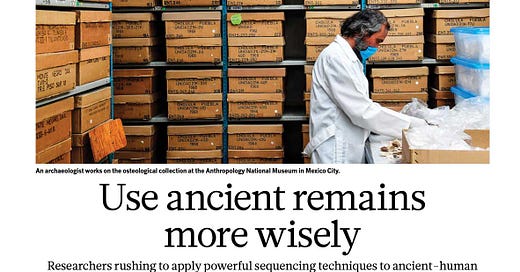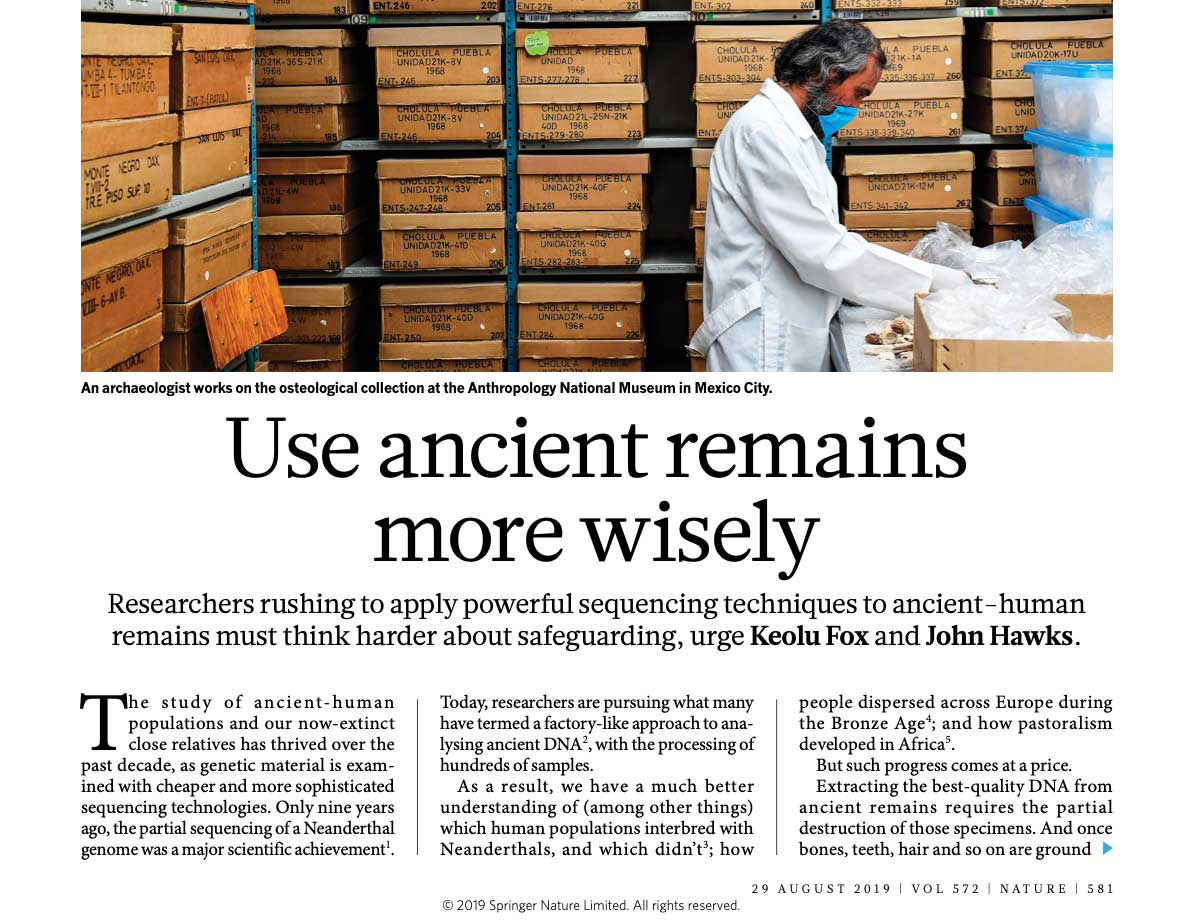Research highlight: Use ancient remains more wisely
In this contribution, Keolu Fox and I consider what is necessary to build a sustainable science of ancient DNA.
Citation: Fox, Keolu and John Hawks. Use ancient remains more wisely. Nature. 572: 581–583. https://doi.org/10.1038/d41586-019-02516-5
In this piece, Keolu Fox and I look at the ways that ancient DNA methods are changing our understanding of the past, and what it will take to make this kind of work sustainable. The analysis of ancient biomolecules today is a destructive process. In the name of increasing sample size and statistical power, today's researchers have hunted through skeletal collections, drilling the petrosal bones of thousands of ancient individuals.
“To our knowledge, no one currently has a full list of all the samples from ancient humans and closely related species examined so far (meaning samples ranging from hundreds to tens of thousands of years old). No one is tracking the success rate of data recovery across laboratories and samples. And no one knows how many specimens are left.”
We look at what is necessary to build a science that continues to be strong in the future. It must include the full participation of today's descendant communities in planning research questions and priorities. It also must recognize that sample size is not the only important goal of research. We can advance today's scientific methods while leaving heritage objects for future, less destructive methods.




